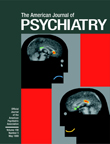Throughout the course of history runs an intuitive thread that connects the fate of the child to the personalities of the parents. The apple does not fall far from the tree, and if the apple is rotten the tree must be diseased. It has been said that moderately successful parenting produces children that have their own neuroses rather than those of their parents.
This book represents another attempt to put such homilies into a scientific framework, and the authors have designed a study maintaining rigorous standards and leading to observations that can lend themselves to intensive statistical scrutiny.
The study focused on children and their environment up to the threshold of adulthood. Psychopathology is viewed from a developmental perspective, and the study provides data to investigate normal development. The methodological frame follows Kurt Lewin’s orientation, which emphasized the person’s interaction with the environment rather than family functioning and stress, although the family is viewed as the mediator of psychopathology.
The authors classify the mother as primary caregiver, but in order to be included in the study the father had to meet certain criteria. For example, the husbands of affectively ill mothers had to have no psychiatric disorder other than anxiety or depression. The study included 98 families—42 with mothers who were depressed, 26 with mothers with bipolar depression, and 30 with well mothers. Each mother had two children: one 1.5–3.5 years old and one 5–8 years old. The study group included Caucasians, some Hispanics and blacks, and many college graduates.
The sources of data consisted of observations of behavior, interviews, and tests, including tests of affective-cognitive status and “regulatory and relationship dimensions” (p. 33). The laboratory was a spacious apartment, which the families usually visited for a half-day or longer throughout the years. This book contains masses of data summarized in charts and graphs as well as statistical analyses.
Many of the conclusions are what might be expected. For example, the children of well mothers are at less risk for personality disorders than those of depressed mothers. Other conclusions, however, are not so self-evident. For example, in some instances, the children of mothers with bipolar disorder do better than those of well mothers (see the graphs on pages 64 and 65).
Although there are some case histories in the book, the study is primarily phenomenological and restricted to behavioral clusters. It is difficult, if not impossible, operationally to define such complex concepts as normal and well without an in-depth exploration.
The problem is further compounded when the relationship between two individuals has an effect on their children that eludes prediction because there are more variables involved than can be accounted for. A father, for example, may protect his son from an assaultive mother, and the outcome for that child would be quite different from the outcome for a child who was not protected from his mother. The butterfly’s fluttering wings in Hong Kong may be responsible for tomorrow’s storm.
This is a thorough, exhaustive study, but one must ask toward whom it is directed. It is undoubtedly quite valuable for academic research because it probes into certain unusual factors underlying developmental processes and behavioral clusters, but for the clinician it is not, at this stage, particularly useful. I suspect, however, that the findings of Dr. Radke-Yarrow and her associates will someday become an important part of a valuable database leading to the discovery of invariants that dynamically define the genesis of psychopathology and, perhaps, its resolution.

